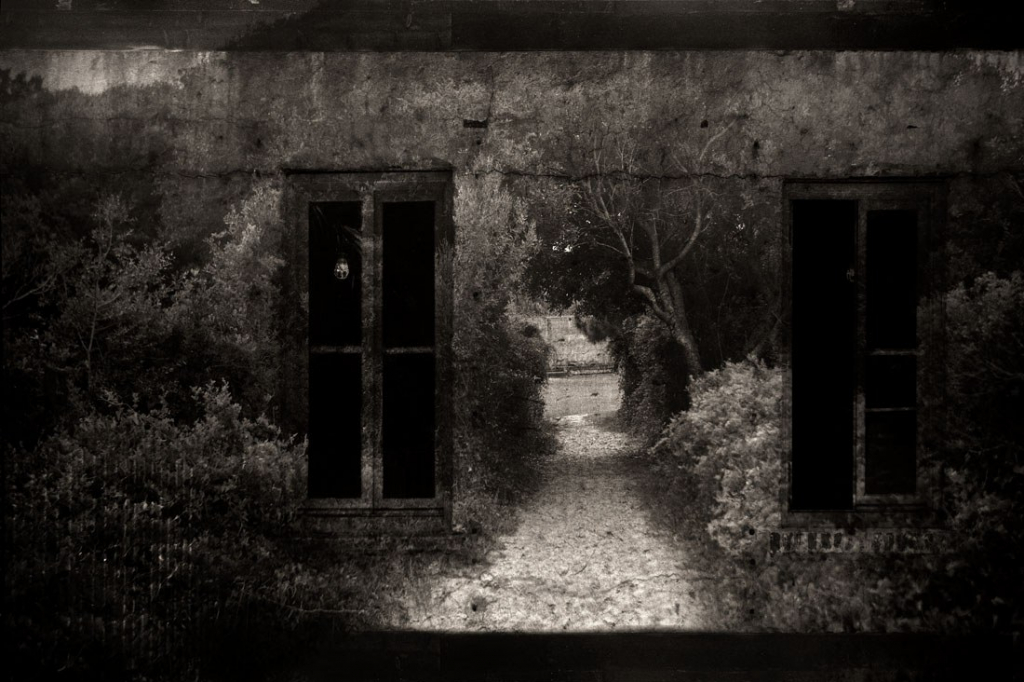Thomas Carr | The Archaeology of Light copy
July 26, 2023

Thomas Carr is an archaeologist and a photographer. Those two parts of him merge in his work, as beautifully as he melds one image into another. His photographs deal with layers of time, and with landscapes that are saturated in history. In The Archaeology of Light, some of the photographs are made in-camera, and some are smartly layered in photoshop. (I’ll let you guess which are which.) They all share the same, somewhat haunted visual language. Many pictures show portals or passageways, and the shapes feel meaningful to me — the spherical end of the tunnel, the recurring broad rectangles, the pointed vault that opens to the night sky; all are exits.
Each picture is a believable space, but a fissure begins to appear in the viewer’s spatial understanding. If you travel down a stone path, you may abruptly hit a wall, as a bird hits the glass. It’s disconcerting, and frankly, exciting. The visual mysteries are not quickly resolved; they are meant to stay mysterious. The whole point is to get a little lost, and in doing so, to get lost in time.
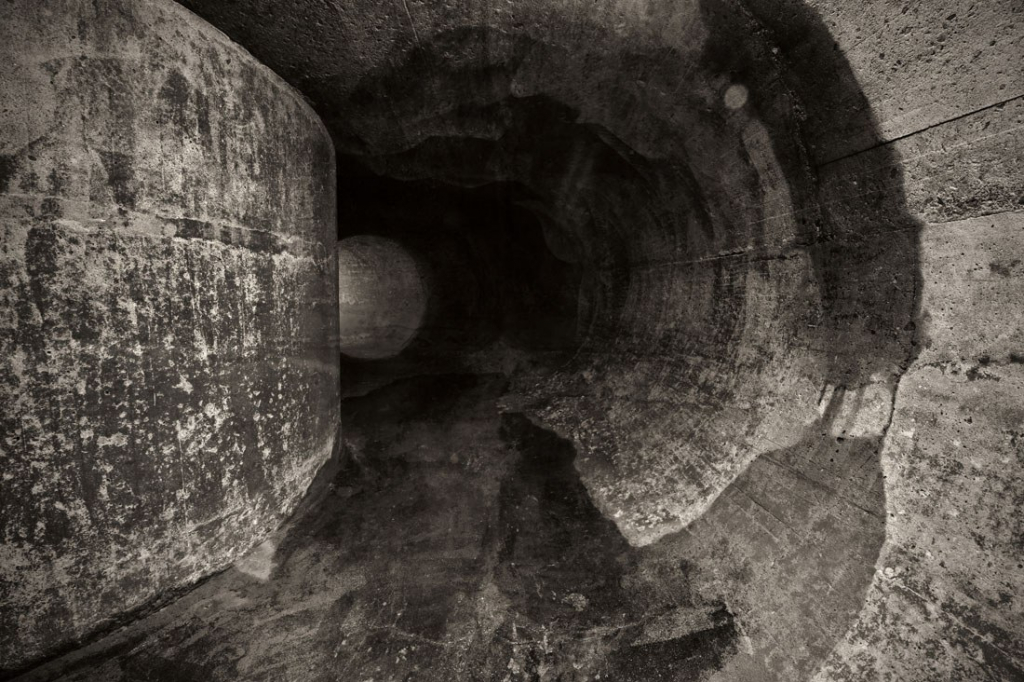
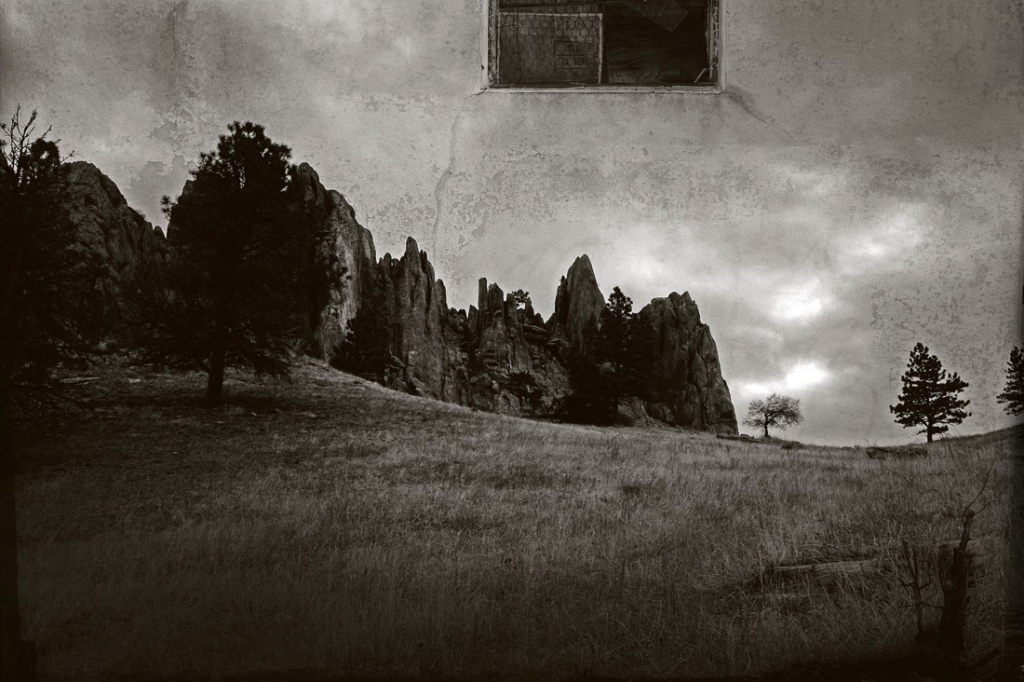
In this image of Boulder’s Prospect Park, your eyes can choose to walk uphill, past trees and meadows, or exit top right, through an escape hatch in the wall. In the logic of the photo, these are equally viable paths.
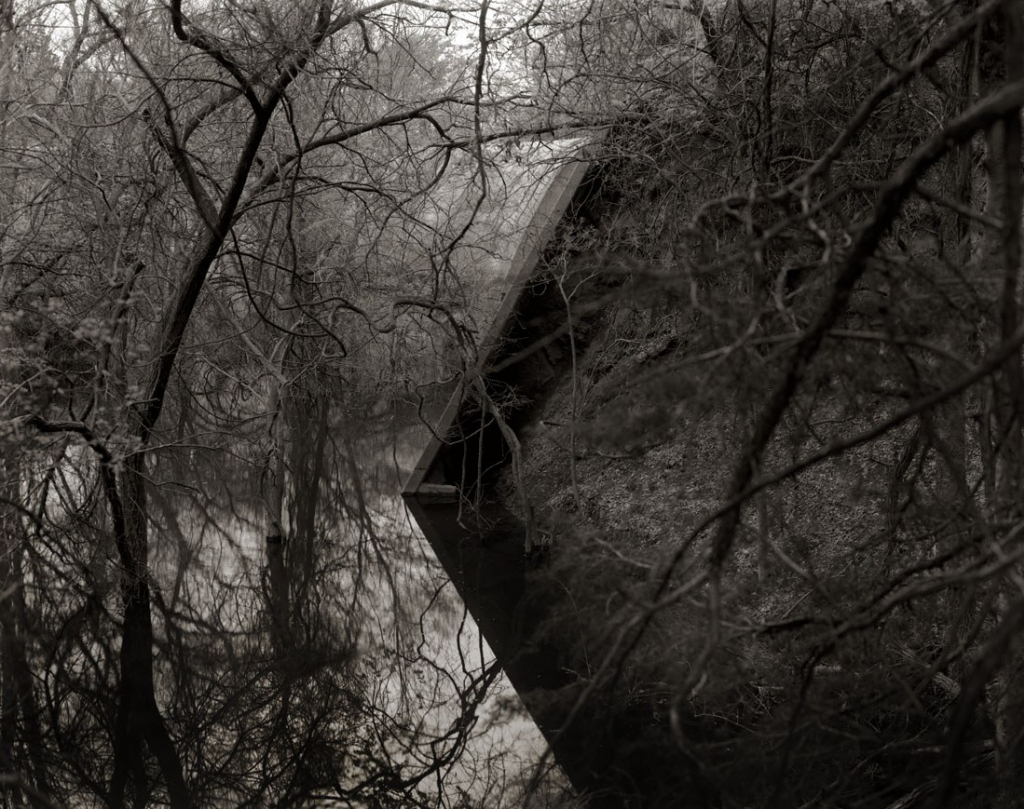
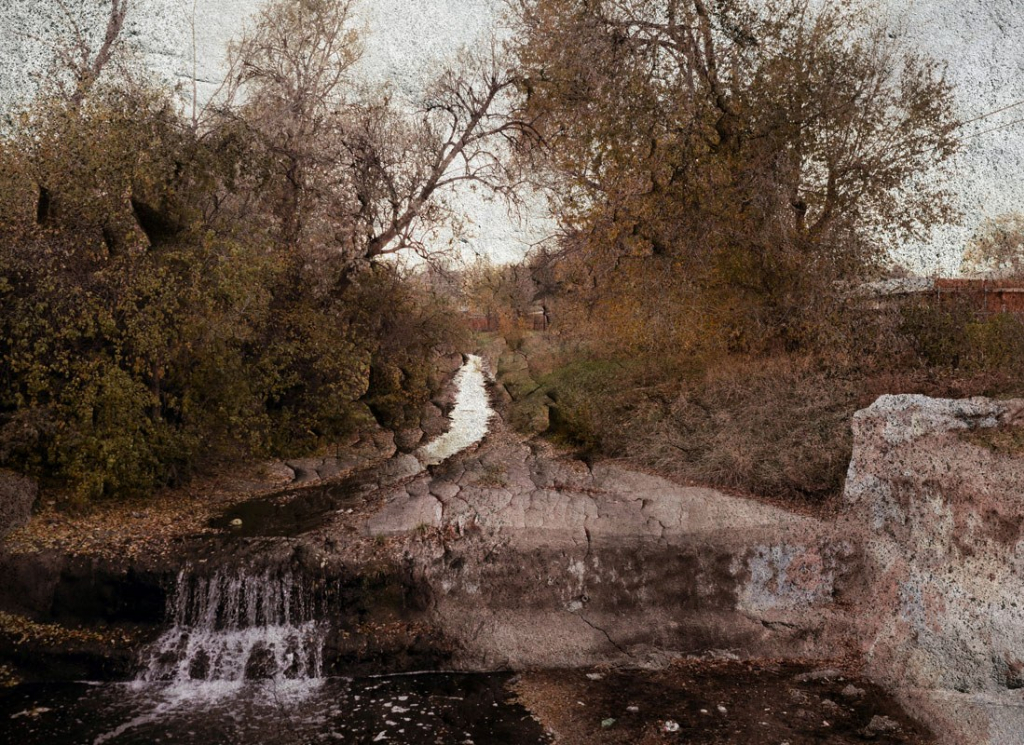
In this color image, the layers of the landscape begin to flake off. Years are cracking away from the urban drainage ditch, and a more primal vision of the place soaks through to the surface.
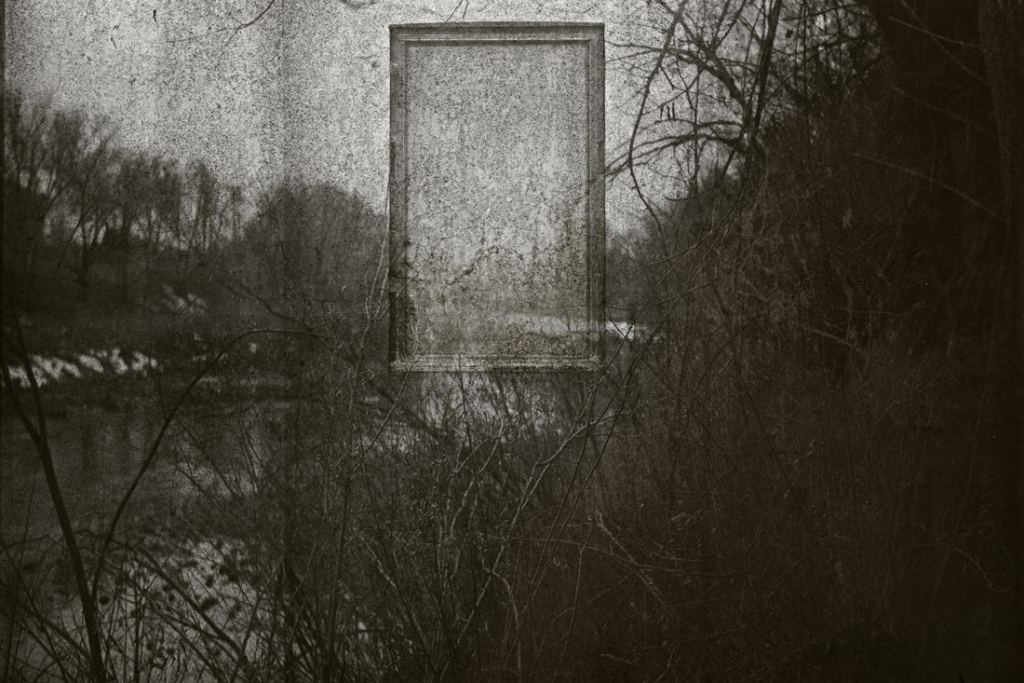
A winter scene of the Platt river and the sealed window of a crypt seamlessly become one place. One picture is absorbed into the other. Another view from inside a burial crypt has been replaced with the stars. In these two pictures at least, Carr imagines pathways after death to the next place in our existence. But where might the other portals be taking us?
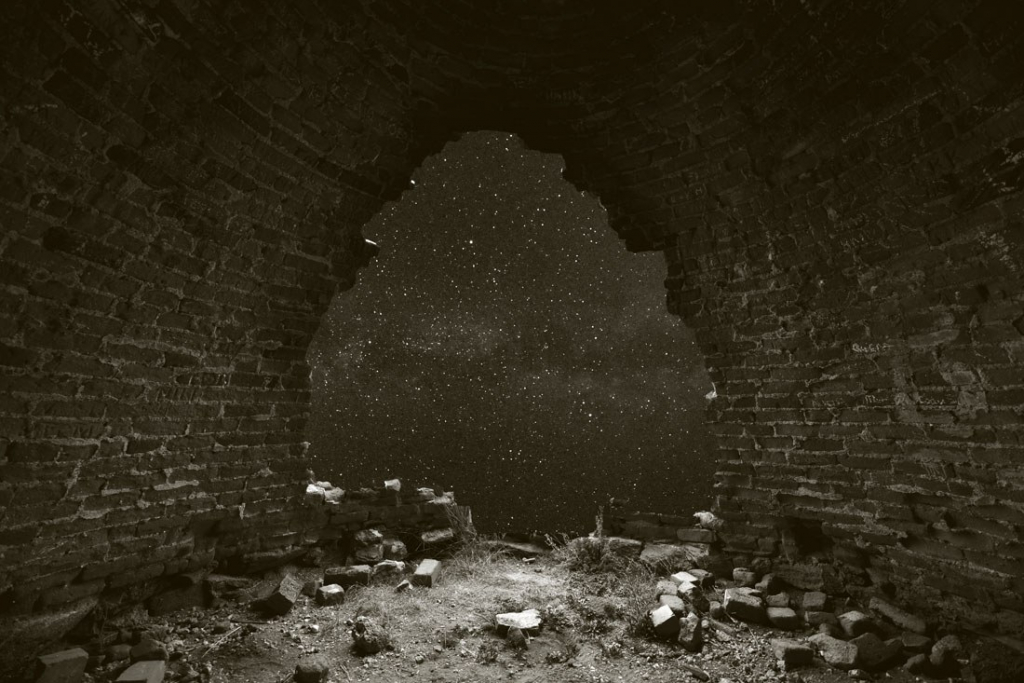
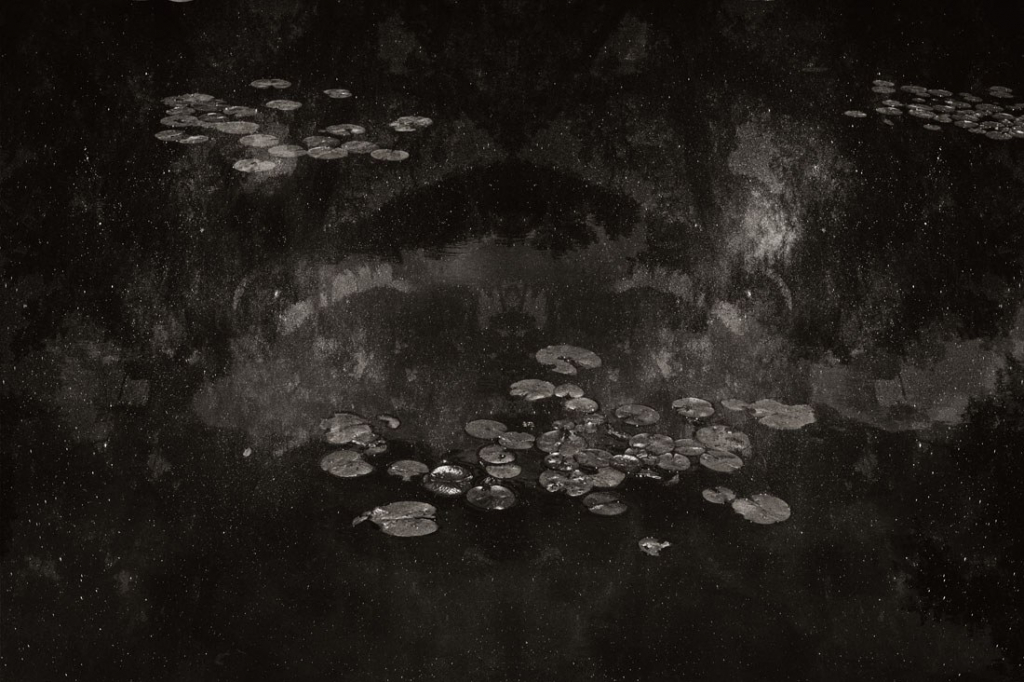
Carr’s lily pond may be the closest I’ve been, in photographic terms, to the Narnian world between the worlds. The journey looks inviting, like I could dive on through.
The thing I love about Carr’s work is that he creates imaginative landscapes in a way that is so believable. Photoshop’s endless capacities often give way to wildly overt fantasy space, but it’s the reserved and less visible hand, pushing the scenes here towards something real, that makes them so appealing. They meet me on literary terms, like a good novel of magical realism, where concrete details cover over impossibilities and spawn the imagination.
- Lisa Woodward
